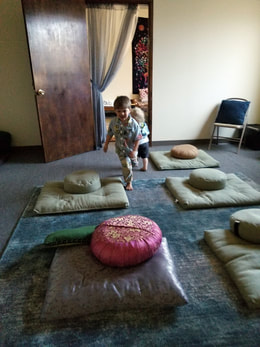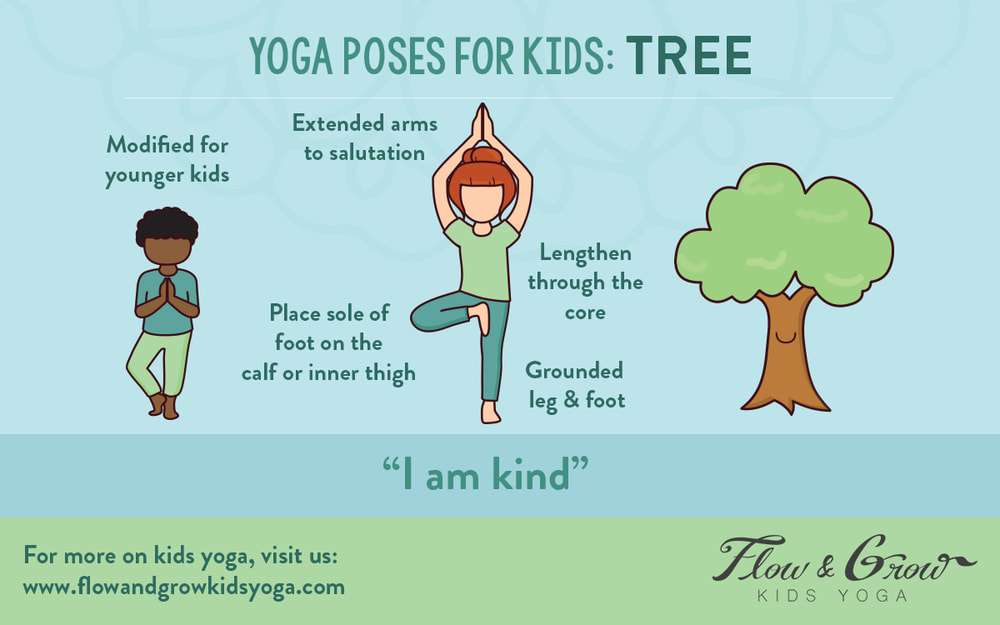|
Mindfulness, Kids & Parenting I get asked to share meditation and mindfulness tips often and I love that. More specifically, I get asked about how it works with kids, because--well, I’ve worked with young children for over 15+ years and I’m a yoga teacher. The two go naturally hand in hand. So, how does mindfulness work with our young children? How can we teach them to release the feelings that cause stress and anxiety? What can we do when our children seem anxious, worried or seemingly unable to find a space of calm within. And, how does yoga fit into it all? The answers are actually quite simple ... and the best way is to share is through a quick story. **** I remember so distinctly, like it was yesterday, the moment it became so clear to me that I couldn’t “fix” everything for my child. She was only a few weeks old, and having such a painful bowel movements, a rash, and a hard time feeding. It was so hard to bear witness to. For me, the biggest struggle wasn’t knowing that she was in pain. (That was hard too, but deep down I knew she would be okay) No it wasn’t that--it was dealing with all the emotions that came up for ME around the whole thing. I felt helpless and as though I was doing something wrong to cause such pain for her. Then the anxiety propelled me forward into my own thoughts about what pain she would inevitably go through in her own life: Her first heartbreak, the first time you learn that girls can be really mean, when friendships fall apart, and on and on. Life has pain but we manage, we find our way. That’s a truth I understood, but I still couldn’t help feeling the pain that even kisses on boo-boos and bandaids won’t fix everything for my little girl. So here I was, holding my 3 week old baby and getting hit with a metaphoric Mac Truck reminding me that life can be painful and I can’t fix it all for my children. And, this is where yoga fits in. I knew that these were just feelings, they would pass and as long as I remained able to witness them and observe them they would eventually shift and change--or at least my relationship to them would. Now, I feel so different about the reality that my daughter will inevitably get hurt, experience stressful feelings, and get anxious about one thing or another. When it comes to mindfulness with children, toddlers, babies, teenagers, and adults, it boils down to the same principal: Simply notice the emotions and thoughts as they arise, not attaching meaning or judgement to them. It’s simply the art of doing nothing, in many ways. From there, we can relate to our emotions from a very different place. And our children, in so many ways, are just looking to us to gather information on how this process works. We can help them learn breathing techniques (blowing bubbles helps!) that are age appropriate, and use meditation apps on our phone that lead the way. But, the most important and effective principal is to keep our own selves, as parents and adults, in check. Mindfulness, at any age, is all about two things: Noticing and acknowledging what is happening. Breathing and adapting. Here are some quick tips for making mindfulness a family affair: Making mindfulness a family activity simply starts by showing them how you, as the parent, are doing it. How are you coping with tough emotions and disconnection? When our children are upset (perhaps even rolling on the floor screaming), we can start by first checking in with ourselves what is going on with us. What is at the heart of the frustration we might feel? How we react will shape their experience and gives them cues on how to respond for themselves. For so many of us, we have patience until we don’t--then we might raise our voice or make threats to take something away. As parents, the daily demonstrations of our own ability to work through emotions is how our children learn their own processes. Make mindfulness about you first, and your child second I know this one might seem counter-intuitive, so stick with me on this one. If you want to teach a skill to someone you must first really, truly, understand it from as many angles as you can before you share it. The reality is, so many parents are telling me that their child is extra sensitive, anxious, stressed, ect. And this is only increasing. But once we see that children are so connected to our energy (that’s why they choose us as their parents, right!?), it becomes SO much more important for parents to learn the art of mindfulness and seek support for their own mental health. More importantly, It’s time to debunk this myth that mental health support means you are sick, depressed, anxious or the like. Sometimes getting support just means you want to enjoy a deeper connection to yourself and life. We aren’t broken because struggle with tough feelings, and its important our children learn that from us. Create opportunities to connect to emotions, intentionally, as a family Having family dance parties develops community connection to joy and laughter. Doing a quiet activity builds community around peaceful moments alone. Having these anchor points to relate to for your children makes a big difference in their understanding of how to label emotions and describe experiences. (i.e. Colouring by myself feels peaceful because I’m alone and quiet). But what about Yoga Poses? Do they help? So, where does yoga fit into all of this? Everywhere, really. But first you need to know that yoga isn’t just poses. In fact 90% of the true value and “truth” of yoga is the portion of the iceberg under the water outside of our what we see. We tend to just experience the tip of the iceberg through media and books. The true heart of yoga is to connect the body and mind in self-observation. That’s it. If you can connect to yourself, you’re “doing” yoga. But kids are mobile units, to be sure! They LOVE yoga and after working with hundreds of children, I can tell you, they already know how to do it. They really don’t need us to teach them! There are a few poses, however, that are fabulous to do with your children to build a sense of anchoring calming emotions in the body. Here are my top three picks! This is a pose children naturally go to, so it is a perfect start! You can help them learn to breath, feel connected to being safe and secure. You can play some quiet music in the background and help them settle into the quiet by rubbing their back or just placing your hand gently on them.Any balancing pose can really help shift a state of frenetic emotions into a place of focus, giving the child a new place to centre their mind. It can be playful and fun--pretending you are swaying in the breeze, or a leaf falling gently on the ground.This is a favourite of mine because there are so many variations. For a very quiet and "sleeping turtle" bring the bottoms of the feet together to help close the body up even more. Get creative and let the turtle "wake up" and stretch and extend the arms out wide.When it comes to yoga and children, be playful and fun. Remember that there is no "right" or "wrong" way for them to enjoy the poses. Anything goes, but remember to avoid headstands because their neck muscles haven't developed enough to make it safe.
For the moms out there that want to get a better sense of mindfulness for themselves so that they can share this powerful practise with their children join me here for some great tips, free trainings and chats. xo Namaste
1 Comment
10/2/2019 01:32:08 pm
My child is very active and I would like for him to do an activity that will calm him. I like how you mention that yoga builds a sense of calming emotions through their bodies. Thank you for the information. I'll sign my child up for yoga so he can have fun and relax.
Reply
Leave a Reply. |
AuthorLeanna Jane Lewis Archives
January 2020
Categories |




 RSS Feed
RSS Feed